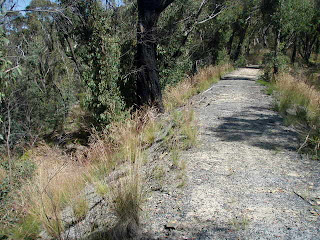Situated approximately 750km west of Sydney, Willandra NP is another example of a working sheep station that began in the 1880's and survived through to the late 1960's. Like Kinchega, Mungo, Mt Wood and Wilga, its contribution to our national identity and our prosperity made this trip one to be remembered, especially on Australia day.
At its peak it covered 1760sq klms of flood plain, and 90,000 sheep were sheared in a season. The 1920's and 1930's represented its "hay day" with peak production in those years.. In 1912 Vickary Partnership purchased the lease and in 1918 built the beautiful homestead, which still exists today, (see above).
A severe drought just after WW2 began the decline, and by the late 1960's, (even with 22 employees), the property was purchased by Dalgety who did not renew the lease. It was finished. In 1972 NSW National Parks took over the property and in 1997 the homestead was beautifully restored. It was fortunate- in the late 1960's it as to be demolished but the pastoral company did not have enough money.
The drive to Willandra does not look difficult on the map. Tar all the way to Lake Cargelligo, then patches of tar and dirt to Hillston. A final push of about 65klm to the National park is all that's required.
Here is the point- On our trip, (in 06), to the outback, Maalie asked me why I always carried 2 spare tyres... for this reason- The very time I did not carry one we experienced a blow out. Roads here are rough and tough. Even though the vehicle weighs 3.5 tonnes, it was only a few minutes before we were on our way again. The point is this- we did not see anyone and the road was littered with blown tyres. Also, being the long weekend, NO tyre repairers were open. It's a lesson learned- Carry 2 spares even if you think its an "easy" trip or you could be camping beside the road and not where you want.
The Landscape? Flat flood plain from horizon to horizon. Very few trees. Just evidence that, if it rained, you would be stuck. The Willandra creek runs into the Lachlan river, and evidence of recent rain could be seen. It's quite agoraphobic!
From the flat land, devoid of trees and form, suddenly we are greeted by buildings and trees! We had arrived. The homestead is simply beautiful. Green lawns, established gardens and trees all backing onto a lagoon, emerge from what seems no-where.
We drove on to the camp sites. Soon the troopie was set up with kitchen and sleeping facilities. The camping areas backs on to the outer area of the swamps and will the rain you could smell the decay in the air.
Once set up , we set off along one of the walks which follows the banks of the creek. We were soon greeted by Whistling Kite, Wedge tail Eagle, Brown Thornbill and Grey Fantail. A Shingle back lizard sunbaked close to evidence of feral animals. The skull of a feral pig caught our attention, as too did the remains of goats and fox. Kangaroos hopped away lazily whilst emus did their usual "stupid" running away.
In the right season up to 170 species of bird can be seen on this lagoon and creek. Its clearly an oasis in a bland, hot and dry land.
On returning to our campsite a bbq dinner and a coopers pale ale was had as we sat watching the sun set. It was simply beautiful. We discussed just how tough the men and women were to "tame" this land. But rather reduce it from salt bush and tree to weed and desolation. They did not know and its that simple. It was still hot as the sun disappeared.
Soon we had a camp fire going as owls and bats flew overhead, and a beautiful moon appeared through the trees.
It was a reflective mood as the ale flowed and I recalled my grandfather and his brother who worked and managed Stations such as this. frankly I would rather spend Australia day here than spend it amongst the crowds in Sydney.
Birds seen:- Whipbird, Bell Minor, Australian Magpie, Pee Wee, Soldier bird, Little raven, Australian raven, White Winged Chuff, House Sparrow, Willy Wagtail, Welcome Swallow, White Necked Heron, Great Egret, Wedge Tailed Eagle, Australian Pelican, Black Faced Wood Swallow, Plover, Nankeen Kestrel, Emu, Red Kneed Doterill, Black Chinned Honey Eater, Mallie Ring Necked Parrot, Brown Thornbill, Crested Pigeon, Whistling Kite, Black Kite, Azure Kingfisher, Pied Butcherbird, Grey Butcherbird. Apostle bird. White Browed Babbler.









